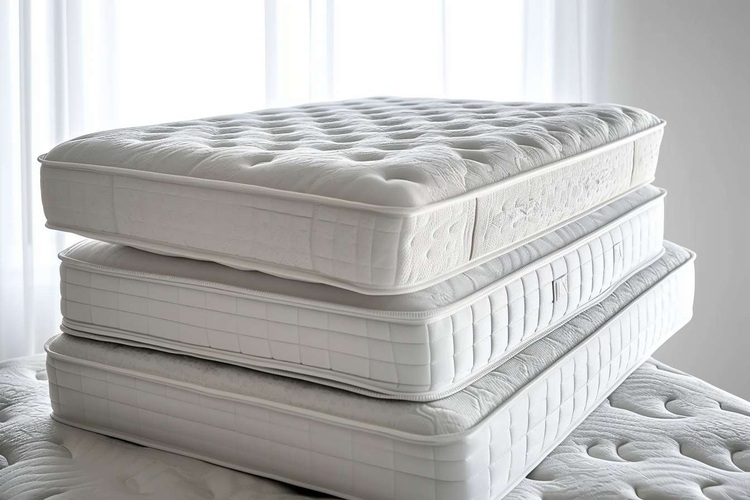Acoustic improvements for quieter nights and deeper rest
Small acoustic improvements can make a noticeable difference to nighttime noise and sleep quality. This article outlines practical steps—from adjusting layout and furniture to choosing textiles and insulation—that support quieter nights and more restorative rest.

Nighttime noise can fragment sleep and reduce restorative rest, but targeted acoustic improvements in a sleeping space often yield measurable benefits. By addressing sound paths, adding absorptive materials, and refining the room layout, it’s possible to lower ambient noise levels and create an environment more conducive to uninterrupted sleep. Practical changes—many of them simple and reversible—can complement good lighting, ventilation, and mattress choices to support better overall sleep quality.
This article is for informational purposes only and should not be considered medical advice. Please consult a qualified healthcare professional for personalized guidance and treatment.
How do acoustics affect sleep?
Acoustics refers to how sound behaves in a room: reflection, absorption, and transmission. Poor acoustics can turn small noises into sudden disturbances that interrupt sleep cycles. Soft surfaces, textiles, and targeted insulation reduce reflections and lower perceived volume. When sound from hallways, neighboring apartments, or HVAC systems reaches the bed area with reduced sharpness, people are less likely to rouse. Integrating acoustic thinking into bedroom design helps create a calmer auditory environment that supports continuous, deeper sleep.
How can layout and furniture reduce noise?
Room layout and furniture placement influence how sound travels. Position the bed away from shared walls, windows, and doors when possible to increase distance from external noise sources. Use bookshelves, wardrobes, or dressers along thin walls to add mass and scatter sound. Floating furniture and area rugs break direct sound paths. Strategic placement of furniture also improves ergonomics and sightlines: a restful view and unobstructed movement reduce stress that otherwise makes sleepers more sensitive to noise.
What textiles and insulation help dampen sound?
Textiles are among the most accessible acoustic tools. Heavy curtains, layered bedding, upholstered headboards, and rugs absorb mid- and high-frequency sounds. Thick drapes over windows can reduce street noise, while wall hangings and fabric panels cut echoes. For structural transmission, insulation within walls or adding a second layer of drywall with acoustic compound can reduce noise transfer between rooms. These steps also influence temperature and allergens, so choose materials that balance sound dampening with breathability and hypoallergenic properties.
How do lighting, ventilation and allergies interact?
Lighting and ventilation don’t directly change acoustics but impact sleep and how sensitive someone is to sound. Bright, cool lighting before bed can delay sleep onset and increase noise sensitivity; warm, dimmable lighting helps the body prepare for rest. Proper ventilation prevents stuffiness that worsens allergies and makes sleep fragmented; quieter HVAC options or silencers reduce mechanical noise. Selecting filters and vent layouts that minimize turbulence lowers noise while addressing allergies—opt for systems and maintenance routines that support both air quality and low sound levels.
How do mattress choices and ergonomics influence rest?
A mattress that supports proper spinal alignment contributes to deeper sleep and reduces tossing and turning that can make sleepers notice ambient noise. Ergonomics extends to pillow selection, bedframe stability, and mattress isolation: slatted frames or box springs can transmit creaks, while solid platforms and mattress toppers can damp small movements. Reducing physical discomfort decreases arousals, which in turn makes sleepers less likely to wake from minor sounds. Consider mattress materials and firmness that match personal needs and any allergy concerns.
How to use storage, minimalism and organization to improve silence?
Cluttered rooms can create acoustic clutter—more hard surfaces and reflective items mean more echo. Embracing minimalism and organized storage reduces reflective surfaces and makes it easier to add purpose-built acoustic elements. Built-in storage, closed cabinets, and soft-front drawers help absorb sound while maintaining visual calm. Color choices can influence perceived calm: muted palettes often feel quieter and less stimulating. Thoughtful organization also limits sources of noise such as rumbling appliances or loose items that can clatter at night.
Acoustic improvements are part of a layered approach to better sleep: combine absorptive textiles, sensible insulation, smart layout and ergonomic choices to reduce noise impact. Pair these measures with appropriate lighting and ventilation to create a sleep-supportive environment that addresses both comfort and health considerations. Small, deliberate changes can cumulatively produce quieter nights and deeper rest.





